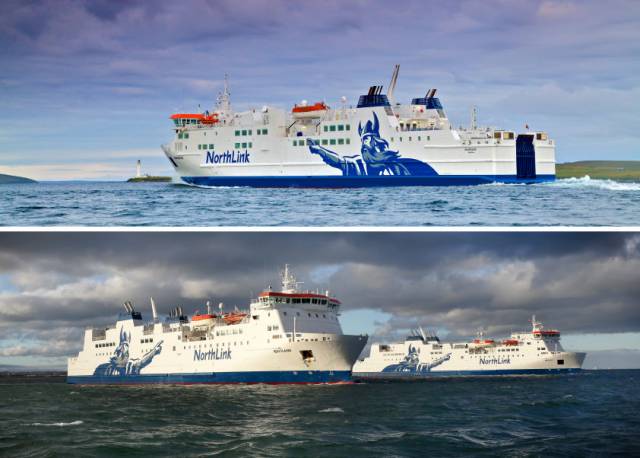#FerryNews - Caledonian Maritime Assets Ltd (CMAL) with loan funding from the Scottish Government has agreed to acquire three Northlink passenger ferries serving the Northern Isles, writes Jehan Ashmore.
The deal announced in rcent weeks, sees CMAL purchase outright the trio of ferries that operate Northlink's network of routes between Scotland and Orkney and the Shetlands. In addition to running an interisland service.
Northlink's ferry fleet which have previously been leased from Royal Bank of Scotland, will be taken into CMAL ownership.
Ferries involved in the deal are the 600 passenger/160 car sisters MV Hjaltland and MV Hrossey and smaller half-sister MV Hamnavoe also with the same passenger capacity but handling 95 cars. They were all built in 2002 and can transport 30 trucks each except in the case of the smaller' ferry's 20 truck capacity.
The 11,720 tonnes sisters operate the Aberdeen-Kirkwall (Orkney)-Lerwick (Shetland) routes (12 hours direct or 14 hours if calling via Orkney). As for the 8,780 tonnes, Hamnavoe serves Scrabster-Stromness (Orkney) which is a shorter sailing time of 1 hour 30 minutes.
Due to delayed works at Scrabster in 2002 to accommodate Hamnavoe, Caledonian MacBrayne's (CalMac) Western Isles ferry, Hebridean Isles maintained sailings until early 2003. The CalMac ferry as previously reported on Afloat had an incident when berthing at Kennacraig in 2016.
Both CMAL and CalMac part of the David MacBrayne Group, are owned by Scottish Ministers.
An 18-month extension to the current Northern Isles Ferry Services contract to Serco Northlink Ferries (also operated on behalf of Scottish Ministers) has also been agreed. This is to allow further progress to be made with the ongoing review of procurement policy.
NorthLink will continue to operate the services until 31st October 2019 under the extended contract






























































